How Not to Break Your Fly Rod: Winter Edition
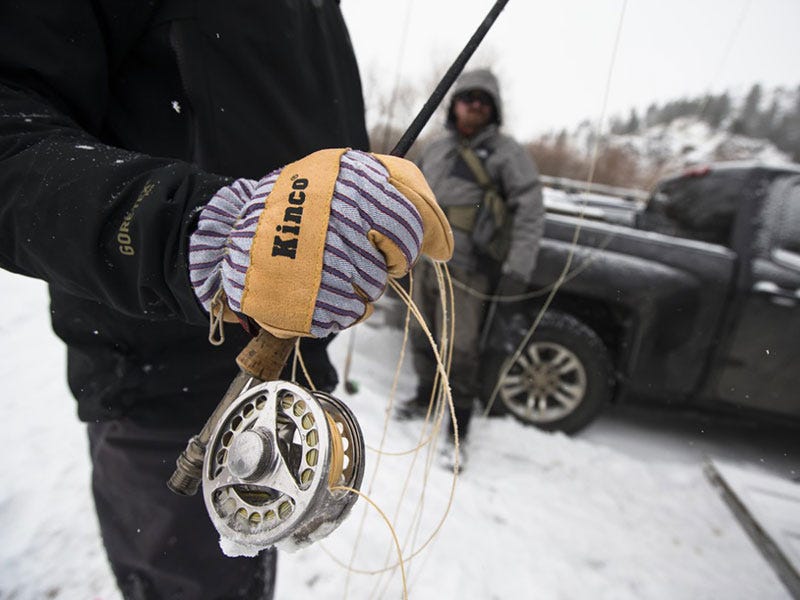
Back in October, I wrote an article for our eMag titled "How Not To Break Your Fly Rod". After watching our friend, Ben, break his fly rod on New Year’s Day, I realized I failed to mention the problems fly rods face in the winter.
When winter fly fishing in sub-freezing temperatures, there are some elements that may damage the integrity of your fly rod.
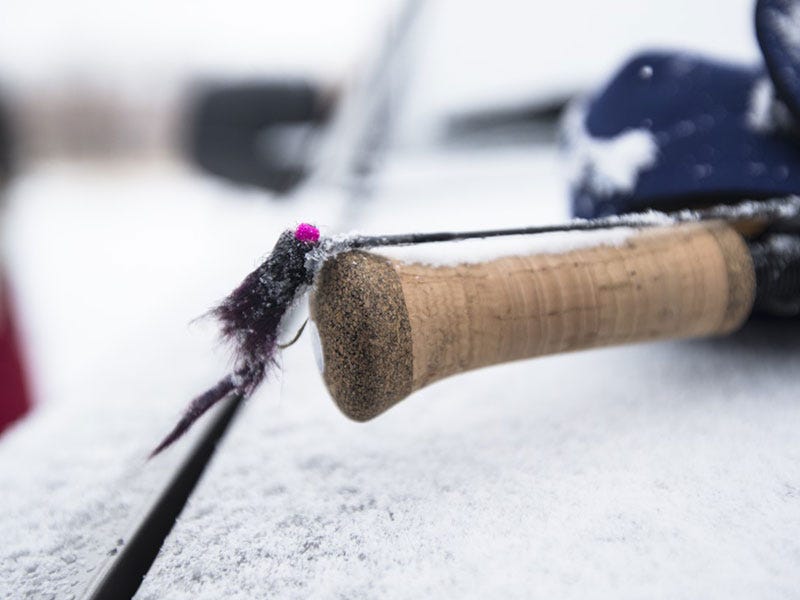
An Icy Problem for your Fly Rod
Contrary to popular belief, your fly rod is not more brittle in slightly sub-freezing temperatures. Similar graphite and resins used in fly rod construction are also used on military aircraft like the Stealth Bomber. That sucker cruises at 628 MPH at 50,000 feet. That’s -121 F without factoring wind chill. Those conditions are a bit colder than fly fishers are likely to wave their rods in, so if you break your fly rod in the winter, don’t blame it on brittle carbon fiber.
Issues arise from the fact that fly rod performance will be hindered by H2O in a solidifying state. When you add a frozen film of water to an already stiff fly line and try to move it through fly rod guides crusting shut with rime, you have a system that is not functioning properly.
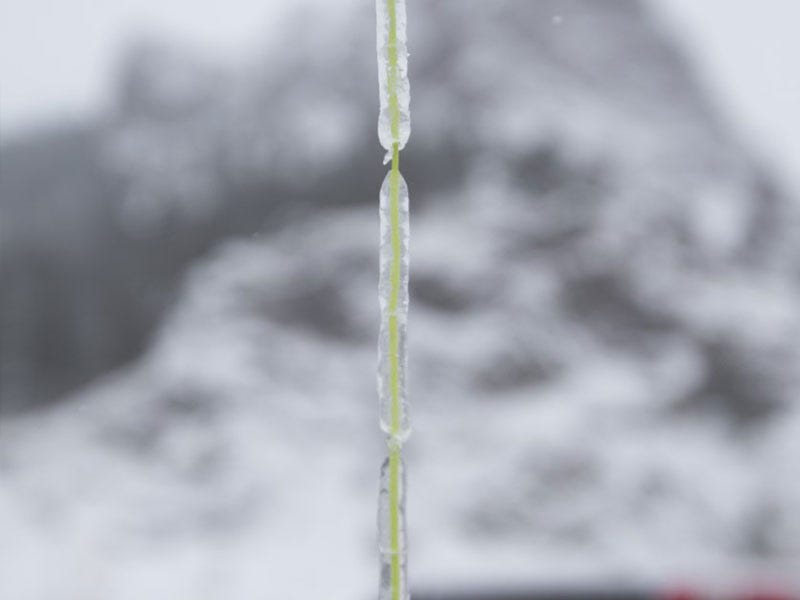
When your fly line is not traveling smoothly and is sticking in the guides from time to time, it can be frustrating. Frustrations often lead to failures. Compounding the problem, your rod tip area may become coated in a sheath of ice for an inch or two. Any bend or stress to the tip is compressed to the area behind the icing.
Take a deep breath. You need to slow down and realize that your fishing outfit is not operating at peak efficiency. You need to be patient with the process. Jerking on the fly line to clear frozen guides or release the line from a clogged rod tip can quickly result in a broken rod tip. Poking at the rod tip with gloved hands or chipping at the ice with a frozen thumb can also lead to a bad outcome. Just ask Ben.
 So what do you do when it's Winter and you want to Fly Fish?
So what do you do when it's Winter and you want to Fly Fish?
In moderately freezing conditions, holding the rod tip under water will often melt the problem away. Especially if the water is well above freezing. In very cold conditions and when the water is only a couple degrees from freezing, you will simply build a popsicle. I’ve found the best way to unfreeze a rod tip is to cup it carefully between my palms and hit it with a few hot breaths. Make sure to have a friend hold the other end or put it down on a dry spot (not in the water or soft snow) while you thaw the tip. If you immerse your reel, you might as well fish a Tenkara rod, because that sucker is done for the day.
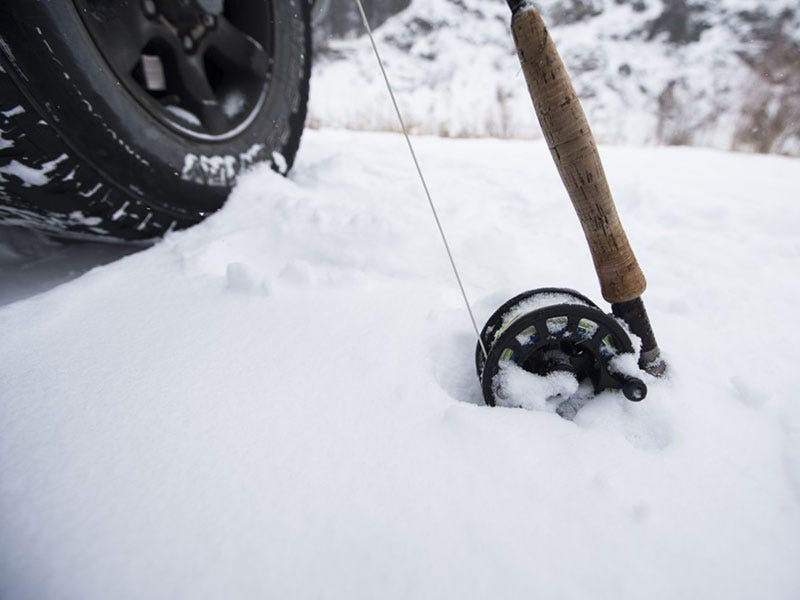
Applying Loon’s Ice Off Paste to the rod guides can help create a hydrophobic barrier, shedding water before it freezes. I also like to use Loon Aquel (dry fly floatant). Coating the fly line with Aquel helps shed water and minimizes icing. Just be sure to clean your fly line before fishing it in warmer weather.
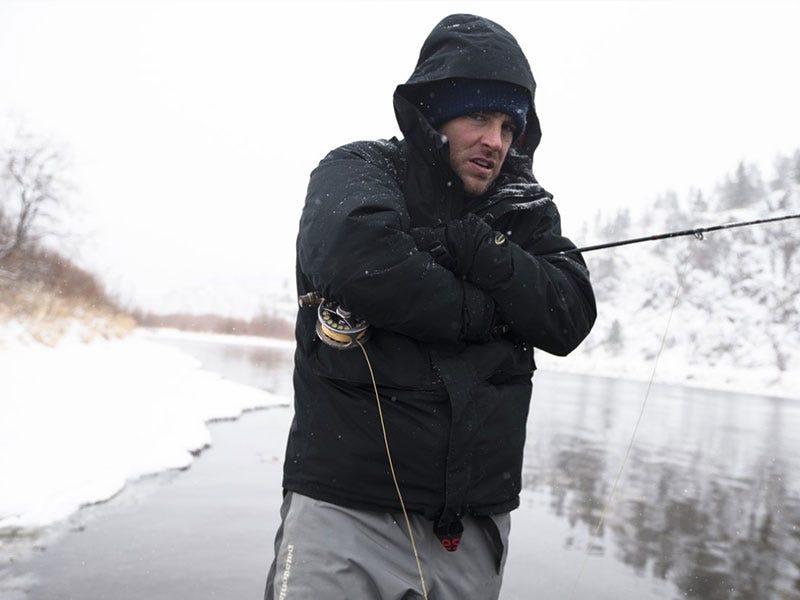
Fishing in the cold is not for everyone. It’s best taken in smaller doses and with some caution. Despite the cold or maybe because of it, fly fishing in the winter has a distinctive feeling. It’s somehow more intimate. There is a deep hush surrounding the river. If it’s snowing, there is a subtle hissing as flakes land in open water. Wintertime fly fishing is a great contrast to summertime angling. Just don’t break your fly rod.
On a warm July evening while fishing to caddis risers, I’ll be able to say to Ben, "Remember when we were out freezing to death last January and you broke your fly rod?" By then, he’ll probably laugh.
